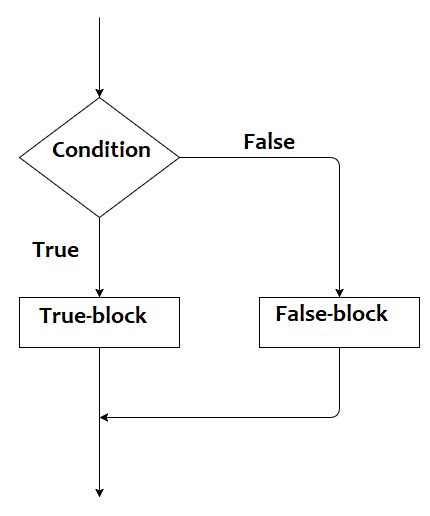Home »
Golang
Golang if-else statement
By IncludeHelp Last updated : October 05, 2024
Golang if else statement
The if-else statement is used to execute two blocks based on the condition. The if statement contains the condition, if the condition is true then the true-block (set of statements of if block) will be executed, if the condition is not true then the false-block (set of the statements of else block) will be executed.
Syntax
if(condition){
// true-block
}else{
// false-block
}
or
if condition {
// true-block
}else{
// false-block
}
Flow chart

Example 1
Input the age of a person and check whether the person is eligible for voting or not.
In this program, we will use the if-else statement to check whether the person is eligible for voting or not.
// Golang program to demonstrate the
// example of the if else statement
package main
import "fmt"
func main() {
var age int
fmt.Print("Input the age: ")
fmt.Scanf("%d", &age)
if age >= 18 {
fmt.Println("Person is eligible for voting.")
} else {
fmt.Println("Person is not eligible for voting.")
}
}
Output
RUN 1:
Input the age: 32
Person is eligible for voting.
RUN 2:
Input the age: 12
Person is not eligible for voting.
Example 2
Input an integer value to check whether the given number is positive or negative.
In this program, we will use the if-else statement to check whether the given number is positive or negative.
// Golang program to demonstrate the
// example of the if else statement
package main
import "fmt"
func main() {
var num int
fmt.Print("Input an integer number: ")
fmt.Scanf("%d", &num)
if num >= 0 {
fmt.Println("Number is positive.")
} else {
fmt.Println("Number is negative.")
}
}
Output
RUN 1:
Input an integer number: 108
Number is positive.
RUN 2:
Input an integer number: -10
Number is negative.
Advertisement
Advertisement